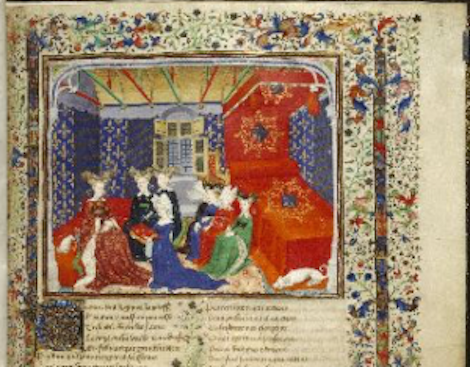
10 Things You Need to Know about the Book of the Queen
Two strong and pioneering women are behind the creation of the Book of the Queen, one of the most accomplished pieces of book art created in France during the Middle Ages.
These women are Isabeau of Bavaria (1371–1435), queen consort of Charles VI of France and regent of France during the minority of her son, the future Charles VII, and Christine de Pizan (c. 1364–c. 1430), French renaissance writer and one of the earliest known women in continental Europe to make her living from writing, today most famous for her early feminist work, Book of the City of the Ladies (1404–05).
Here are ten things you need to know about the Book of the Queen.
1) The Book of the Queen is made up of two volumes, 177 folios and 220 folios, respectively. All folios are made of parchment and measure 36.5 cm by 28.5 cm, or 14.37 inches by 11.22 inches.
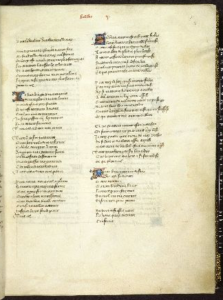
Gothic cursive script (The Book of the Queen, British Library, Harley 4431 f. 10).
2) The book was made in Paris between 1410 and 1414. It is written in French with Gothic cursive script.
3) The Book of the Queen is a compilation of the most popular works by Christine de Pizan. Christine de Pizan turned to writing when she was widowed at the age of twenty-four and needed to find a way to support herself and her family.
4) Christine de Pizan supervised the compilation and copying of the texts in the Book of the Queen. Some of the writing in the manuscript is believed to be by her. Christine de Pizan also supervised the creation of the manuscript’s illuminations and miniatures. Christine’s portrait is featured throughout.
5) The artists responsible for the illuminations and miniatures are the so-called Master of the Cité de Dames and the so-called Master of the Duke of Bedford, and the lesser artists employed at their workshops. Even though we don’t know their true identities, both Masters were well-renowned artists at this point in time.
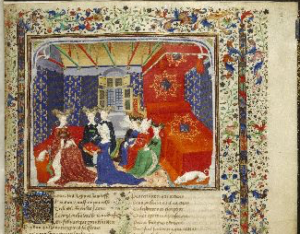
Christine de Pizan presenting the Book of the Queen to Queen Isabeau of Bavaria (The Book of the Queen, British Library, Harley 4431, f. 3).
6) It is believed that Christine herself presented the Book of the Queen to Isabeau of Bavaria as a New Years gift in 1414.
7) The book was sold as part of a larger book collection to John of Lancaster, 1st Duke of Bedford (1389–1435), otherwise most famous for staging the trial and execution of Joan of Arc.
8) The Book of the Queen then passed into the hands of the Duke’s second wife, Jacquette of Luxembourg (1416–1472), whom he married in 1433.
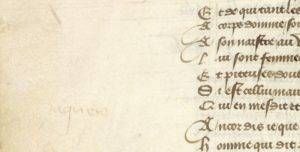
“Jacquete.” (The Book of the Queen, British Library, Harley 4431 f. 52 v).
9) Jacquette of Luxembourg left her mark on the Book of the Queen by writing her name and her motto, sur tous autres (“above all others”) on the pages and inside the miniatures. Her handwriting can be found throughout the manuscript.
10) In 1753, the Book of the Queen was sold to the British Museum as part of the collection of Edward Harley (1689–1741), 2nd Earl of Oxford and Mortimer. The sellers were Harley’s widow, Countess Henrietta Cavendish, and their daughter, Duchess Margaret Cavendish Bentinck. The Book of the Queen was part of the original collections of the British Museum when it opened its doors in 1759. Today, the Book of the Queen is in the possession of the British Library, which broke away from the British Museum in 1973.
If you would like to flip through the pages of this book, the manuscript is available in its entirety, here.
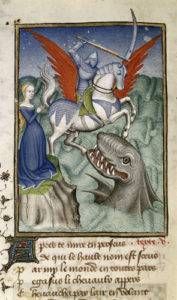
Perseus, riding on Pegasus, saves Andromeda from a sea monster. (The Book of the Queen, British Library, Harley 4431 f. 98v).
Read on with our series about cool and interesting old books, like the Book of Kells, the Codex Gigas, and more.














